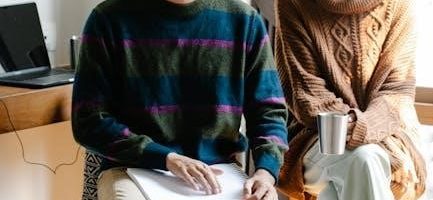Men’s fashion is an art of self-expression, blending style with functionality; It starts with understanding basics like fit, color, and fabric. A well-curated wardrobe reflects personality and confidence, ensuring a man feels his best in every occasion.
Importance of Style
Style is more than just aesthetics; it’s a form of self-expression and confidence. A well-curated wardrobe reflects a man’s personality, values, and attention to detail. It communicates professionalism, reliability, and respect in both personal and professional settings.
Good style boosts self-assurance, helping men feel prepared for any occasion. Whether it’s a formal event or a casual gathering, the right outfit can make a lasting impression. Style also plays a role in social perceptions, as it signals taste and effort.
Moreover, personal style is a form of non-verbal communication. It conveys individuality and authenticity, setting one apart from the crowd. Investing in quality pieces and understanding how to pair them creates a cohesive look that elevates everyday life.
In essence, style is a powerful tool that bridges fashion and identity, ensuring a man feels his best while making a memorable impact. It’s about more than clothes—it’s about confidence, character, and making a statement.
Evolution of Men’s Fashion Over Time
Men’s fashion has undergone significant transformations over the centuries, reflecting societal changes, cultural shifts, and technological advancements. In the 19th century, tailoring became more refined, with suits and top hats dominating formal attire. The 20th century saw a shift toward ready-to-wear clothing, democratizing fashion and making it accessible to the masses.
The 1920s brought a wave of modernity, with suits featuring shorter jackets and wider trousers. The 1950s and 1960s introduced casual wear, such as jeans and T-shirts, challenging traditional formal norms. The 1980s were marked by bold colors, oversized silhouettes, and a mix of luxury and excess.
In the 1990s and 2000s, minimalism and streetwear gained prominence, with brands like Supreme and Nike influencing everyday style. Today, men’s fashion embraces diversity, blending traditional tailoring with contemporary streetwear and sustainable practices. The rise of social media has also accelerated trends, making fashion more dynamic and inclusive.
Throughout its evolution, men’s fashion has become a powerful medium for self-expression, reflecting individuality and cultural identity. From formal suits to casual streetwear, the journey highlights how style adapts to the times while remaining a cornerstone of personal identity.
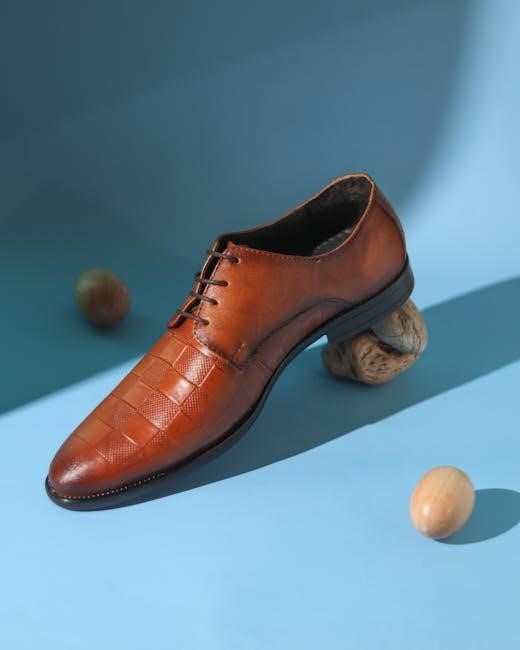
Understanding Personal Style
Personal style is the expression of one’s identity through fashion, reflecting personality, lifestyle, and preferences. It blends current trends with timeless pieces, creating a unique aesthetic that exudes confidence and authenticity, while staying true to individuality and personal evolution.
Assessing Body Type for Clothing
Understanding your body type is crucial for selecting flattering clothing. Men generally fall into three categories: ectomorph (slim, lean), mesomorph (athletic, muscular), or endomorph (larger, broader). Each body type has unique needs when it comes to fit and style.
- Ectomorphs benefit from layers and structured pieces to add definition.
- Mesomorphs can pull off most styles, but tailored fits enhance their muscular frame.
- Endomorphs should opt for slimming fits and darker colors to create a balanced silhouette.
Measurements are key—know your chest, waist, and inseam to ensure proper fit. Dressing for your body type boosts confidence and creates a polished look. Experiment with styles to find what works best for you, and don’t hesitate to seek tailored adjustments for a perfect fit.
Selecting Colors Based on Skin Tone
Choosing colors that complement your skin tone can elevate your style and ensure a polished look. Skin tones are generally categorized as cool, warm, or neutral, each with unique undertones that determine which colors will flatter you most.
- Cool skin tones (pale with pink undertones) look best in deep blues, emerald greens, and crisp whites.
- Warm skin tones (olive or golden) are enhanced by earthy shades like terracotta, olive, and caramel.
- Neutral skin tones (balanced) can pull off a wide range of colors, from charcoal to pastels.
To determine your skin tone, observe the color of your veins. If they appear blue, you have cool undertones; green indicates warm tones. Neutral skin tones may have a mix. Experiment with colors to see what brightens your complexion. Contrast is key—darker colors can create a striking effect, while lighter shades can soften your appearance. Remember, the right color palette enhances your natural look, making you feel confident and put-together.

Essential Wardrobe Items
A well-rounded wardrobe includes timeless pieces like tailored suits, classic white shirts, dark jeans, and versatile leather shoes. These essentials create a foundation for mixing and matching, ensuring versatility for any occasion while maintaining a polished, put-together look.
The Must-Have Suits for Every Man
A well-tailored suit is the cornerstone of any man’s wardrobe, exuding confidence and sophistication. Every man should own at least three essential suits: a navy blue, charcoal grey, and black suit. These timeless choices are versatile for various occasions, from formal events to business meetings.
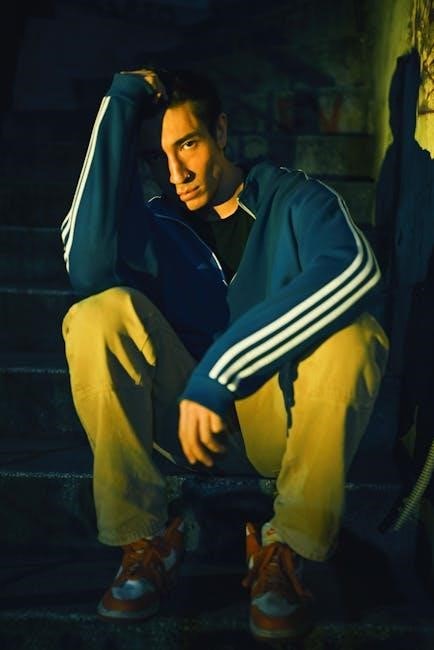
The navy blue suit is ideal for versatility, pairing seamlessly with a wide range of shirt and tie combinations. Charcoal grey is a go-to for professionalism, while black suits are perfect for evening events or more formal settings. When selecting a suit, prioritize fit above all else—a well-fitted jacket and trousers can elevate even the simplest design.
Fabric choice matters, with wool being a top option for its breathability and durability. For a luxurious touch, consider cashmere blends. Style-wise, peak lapels add a broad-shouldered look, while slim-fit jackets offer a modern aesthetic. Accessories like ties, pocket squares, and leather shoes complete the ensemble, ensuring a polished appearance for any occasion.
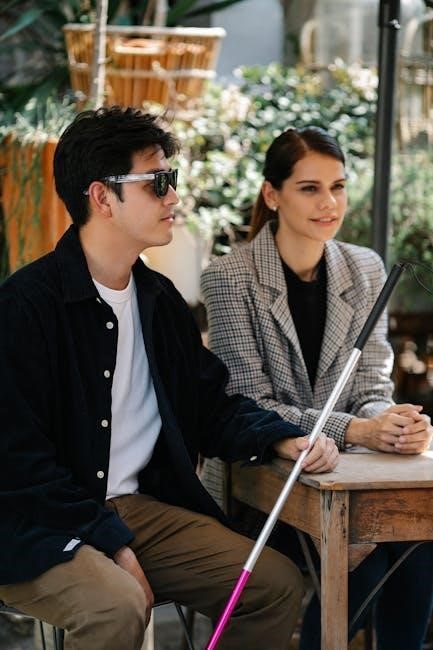
Dress Shirts: Fit, Collar Styles, and Cuffs
A dress shirt is a fundamental component of men’s fashion, and its fit, collar style, and cuff design play a crucial role in creating a polished look. The fit should be tailored to the body, ensuring the shirt is neither too tight nor too loose; A well-fitted shirt skims the torso and allows ease of movement, with sleeves ending just past the wristbone.
Collar styles vary to suit different face shapes and personal preferences. The classic point collar is versatile and suits most men, while the spread collar complements broader faces and is ideal for tying larger knots. The button-down collar offers a more relaxed, preppy vibe, and the wingtip collar is reserved for formal occasions like black-tie events.
Cuffs also add personality to the shirt. Barrel cuffs are the most common, with a simple button closure, while French cuffs are more formal, requiring cufflinks. Button cuffs offer a stylish compromise, blending elegance with practicality. When choosing a dress shirt, consider the occasion, personal style, and fabric quality to ensure a cohesive and polished appearance.
Denim Jeans: Styles and Washes
Denim jeans are a cornerstone of men’s fashion, offering versatility and comfort across various styles and occasions. The right pair can elevate a casual look or blend seamlessly into a smart-casual outfit. Understanding the different styles and washes is key to making the most of this wardrobe essential.
Common styles include slim-fit, straight-leg, relaxed, and loose. Slim-fit jeans hug the legs tightly, creating a modern, streamlined appearance, while straight-leg jeans offer a balanced fit that works well for most body types. Relaxed and loose styles provide more room, ideal for a laid-back, casual vibe;
Washes also play a significant role in defining the look of denim. Light washes are great for summer or creating a vintage aesthetic, while medium washes strike a balance between casual and refined. Dark washes are versatile and can dress up or down, making them suitable for a variety of settings. Distressed washes add an edgy, trendy touch, perfect for fashion-forward outfits.
Choosing the right style and wash depends on personal preference, body type, and the occasion. Pairing jeans with the right shirt, shoes, and accessories can transform them from a simple staple into a stylish statement piece.
Footwear: Types and Occasions
Footwear is a cornerstone of men’s fashion, serving as both a functional and stylistic element. The right pair of shoes can elevate an outfit and ensure comfort throughout the day. Understanding the types of footwear and the occasions they suit is essential for creating a polished look.
Oxfords and loafers are ideal for formal events, such as business meetings or weddings, offering a sleek, sophisticated appearance. Sneakers, on the other hand, are perfect for casual outings, providing comfort and versatility. Boots, whether ankle or knee-high, are versatile and can transition seamlessly between rugged and semi-formal settings. Sandals or slip-ons are great for summer gatherings or relaxed environments.
When selecting footwear, consider the fit, comfort, and material. Ill-fitting shoes can detract from an otherwise impeccable outfit. Additionally, the color and style should complement the rest of the ensemble. For example, earth tones pair well with jeans, while black or brown leather shoes complement formal attire.
Investing in quality footwear ensures durability and a polished look, making it a worthwhile addition to any man’s wardrobe. Whether dressing up or keeping it casual, the right shoes can make a lasting impression.

Grooming and Skincare Routine
A well-groomed appearance enhances confidence and complements any outfit. A consistent skincare routine, including cleansing, moisturizing, and sun protection, maintains healthy skin. Trimming facial hair, managing nails, and ensuring fresh breath complete a polished look that elevates overall style.
Importance of Grooming in Fashion
Grooming is a cornerstone of men’s fashion, as it elevates both personal style and first impressions. A well-groomed man exudes confidence, professionalism, and attention to detail, which are essential in both personal and professional settings. Proper grooming practices, such as maintaining clean hair, trimmed facial hair, and fresh breath, create a polished appearance that complements any outfit. It also reflects self-respect and pride in one’s image. In a world where perceptions matter, grooming helps establish credibility and leaves a lasting impact. Additionally, good grooming habits contribute to long-term skin health and hygiene, ensuring a man feels his best every day. By integrating grooming into daily routines, men can enhance their overall fashion sense and project a cohesive, put-together look that aligns with their personal style.
- Enhances confidence and professionalism
- Creates a polished, cohesive appearance
- Reflects self-respect and attention to detail
- Supports long-term skin health
Effective Skincare Routine for Men
A consistent skincare routine is essential for maintaining healthy, clear skin. It begins with cleansing to remove dirt, oil, and impurities, followed by exfoliating 1-2 times a week to unclog pores and improve texture. Moisturizing is crucial to hydrate and protect the skin, while sunscreen is a must for daily protection against UV damage. Using products tailored to your skin type ensures optimal results. Consistency is key, as it helps maintain balance and prevents issues like dryness or breakouts. A well-executed skincare routine not only enhances appearance but also boosts confidence and overall well-being. Incorporating these simple yet effective steps into your daily regimen can lead to a refreshed, radiant complexion.
- Cleanse to remove impurities and maintain balance
- Exfoliate to improve texture and reduce ingrown hairs
- Moisturize to hydrate and protect the skin
- Apply sunscreen daily for UV protection
By following these steps, men can achieve healthier, more resilient skin that complements their overall style and grooming efforts.
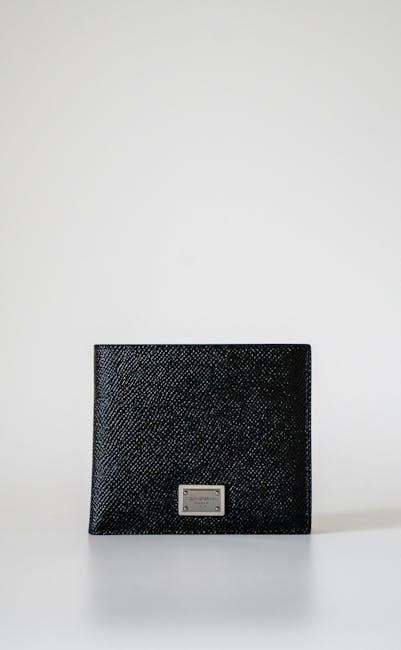
Accessories in Men’s Fashion
Accessories like ties, pocket squares, watches, and jewelry add personality to an outfit, making it unique. They elevate a man’s style, creating a polished look that reflects individuality and sophistication, while complementing the overall wardrobe and personal aesthetic seamlessly.
Ties, Pocket Squares, and Their Usage
A tie is a timeless accessory that adds sophistication to a man’s outfit. Available in materials like silk, wool, and knit, ties come in various patterns and solids, allowing for versatility. Choosing a tie that complements the shirt and suit is key, ensuring harmony in color and texture. A pocket square, on the other hand, serves as a subtle yet elegant addition, adding a pop of color or texture to a blazer. It can be folded in styles like the classic fold, puff fold, or even a casual fold, depending on the desired look. Both accessories are not just functional but also expressive, reflecting the wearer’s personality. When paired correctly, ties and pocket squares elevate a man’s ensemble, creating a polished and put-together appearance. They are essential for formal events but can also enhance a business casual look. Mastering their usage is a skill that enhances a man’s style, making him stand out with confidence and flair;
Watches and Jewelry: Adding Personality
Watches and jewelry are powerful tools for expressing individuality in men’s fashion. A watch, whether leather-strapped, metal-banded, or sporty, adds sophistication and functionality to an outfit. It reflects personal style while serving as a practical accessory. Jewelry, such as necklaces, bracelets, or rings, introduces subtle flair, offering a glimpse into a man’s personality. A simple leather bracelet or a minimalist necklace can add depth without overwhelming the ensemble. However, accessorizing requires balance; overdoing it can distract from the overall look. When choosing jewelry, consider the occasion and outfit to ensure harmony. For instance, a sleek watch pairs well with formal attire, while a casual bracelet complements a relaxed look. These accessories enhance a man’s appearance, making his style uniquely memorable. They are not just adornments but statements of character, blending seamlessly with other elements of his wardrobe to create a cohesive, polished aesthetic.

Seasonal Fashion Tips
Adapting your wardrobe to each season ensures timeless style. Summer calls for breathable fabrics and light colors, while winter demands layers and warmth. Spring and autumn offer versatility with textures and hues, keeping your look fresh and appropriate for any time of year.
Summer Essentials: Fabrics and Colors
Summer fashion revolves around comfort and practicality while maintaining style. Opt for breathable fabrics like linen, cotton, and seersucker, which keep you cool in the heat. Linen is a classic choice for its light texture and natural cooling properties, making it ideal for shirts, trousers, and suits. Cotton is another versatile option, perfect for casual wear like T-shirts and shorts.
When it comes to colors, summer is the perfect time to embrace lighter shades. Pastel hues, whites, and neutrals are not only trendy but also reflect sunlight, keeping you cooler. Incorporate soft blues, mint greens, or coral tones for a fresh look. Pair these with neutral basics like beige or navy for a balanced wardrobe.
Don’t forget to accessorize wisely. A wide-brimmed hat or sunglasses can add personality while protecting you from the sun. Sandals or loafers are excellent footwear choices for warm weather. Remember, the key to summer style is combining comfort with a cohesive color palette and lightweight fabrics.

